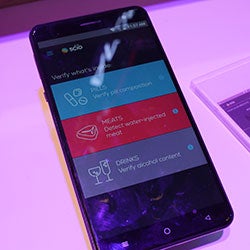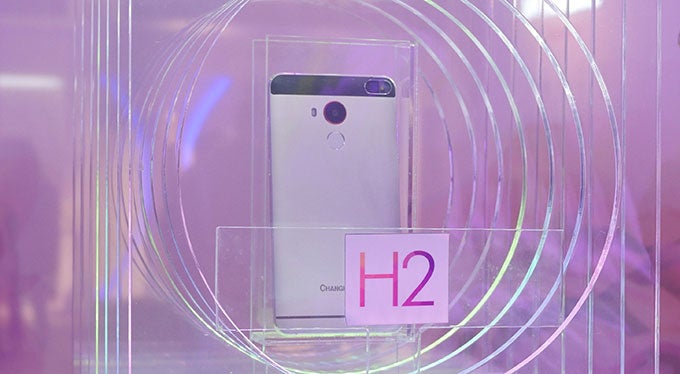This upcoming smartphone can "taste" sweetness, measure body fat, and identify counterfeit drugs

How it works

Uses
OK, so the phone can tell what things are made of. So what? Well, take food for instance: nutrition labels are well and good, but with with a portable spectrometer you can scan any food you come across – packaged or not – and gain useful information about its composition. A diabetic might use a tool like this to evaluate what impact a possible snack might have on blood sugar levels, or you could scan fruit at the grocery store to custom-pick the sweetest, most delicious apples.

We also took a look at apps that can be used to tell genuine materials apart from fakes; the one we got to see at Changhong's CES booth distinguishes prescription medications from counterfeits, but you could just as easily use it when shopping for jewelry to tell a real diamond from a cubic zirconia.
Availability
The H2 may sound like exactly the sort of high-tech prototype gadget that only comes out at expos like CES, and has slim to no chance of actually becoming a real, commercially available product – but that's not at all the case here. Sales of the Changhong H2 are getting started in China early this year, and better still, it's looking good that we're eventually going to see the H2 make its way to the United States sometime this fall.
There are still lots of details to work out concerning exactly how that might happen, and under what branding the phone will arrive in the West, but we're still all sorts of excited to learn that it's in the works. And with pricing in China that comes out to the equivalent of the mid-$400 range, picking up this sci-fi sensor tech in a smartphone could prove to be surprisingly affordable. Will you be looking to take one for a spin once it lands?

Follow us on Google News








![A new Android bug is making it impossible to install new apps. Are you affected? [UPDATE]](https://m-cdn.phonearena.com/images/article/176703-wide-two_350/A-new-Android-bug-is-making-it-impossible-to-install-new-apps.-Are-you-affected-UPDATE.webp)

Things that are NOT allowed:
To help keep our community safe and free from spam, we apply temporary limits to newly created accounts: